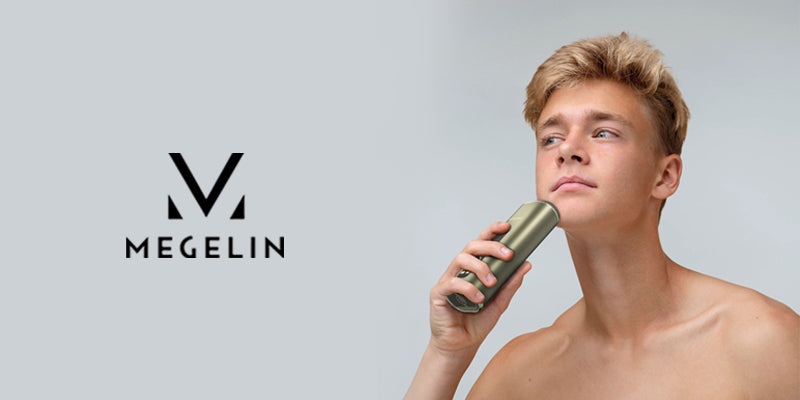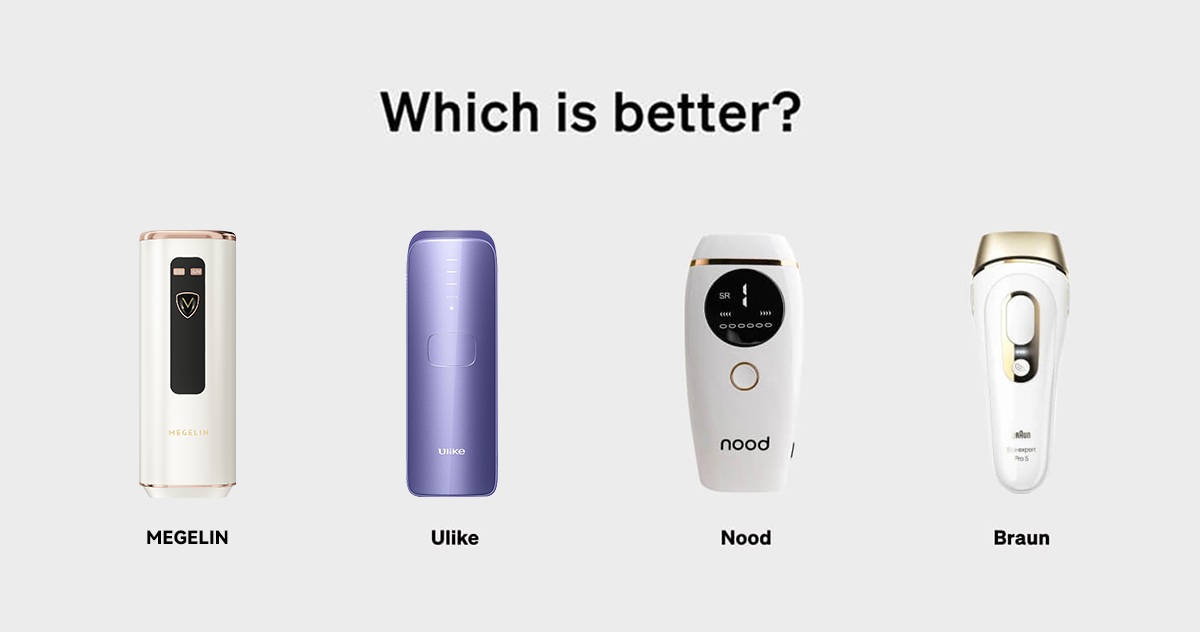
Red Light Therapy Bed: Benefits, Risks, and How to Choose
megelinbeautyRed light therapy beds have become a popular non-invasive solution for skin rejuvenation, pain relief, and muscle recovery. These beds offer benefits like wrinkle reduction, tissue repair, and acne treatment using specific light wavelengths to penetrate skin and tissue. As people seek alternatives to traditional treatments, understanding how red light therapy works and its benefits and risks is essential. This technology shows promising results for skin health and joint pain relief, increasing its popularity for home and commercial use.
This article explains the mechanics of red light therapy, focusing on LED panels and light intensity. It covers benefits such as anti-aging, treating skin conditions, muscle recovery, and pain management. Additionally, it compares different models of red light therapy beds, highlighting features like full-body treatment and medical-grade specifications. By detailing what to look for when buying a red light therapy bed, including key factors like wavelengths and price-performance balance, this guide helps readers make informed decisions about incorporating red light therapy into their wellness routines, whether for home or professional use.
How Does Red Light Therapy Work?
Red light therapy operates on a principle where specific wavelengths of red and near-infrared light penetrate the skin and underlying tissues. These wavelengths, typically ranging from 630 to 880 nanometers, are absorbed by mitochondria, the energy-producing structures in cells. This absorption stimulates the production of adenosine triphosphate (ATP), enhancing cellular metabolism and regeneration.
Mechanism of Action
The effectiveness of red light therapy hinges on its ability to activate photobiomodulation processes within the body. When cells absorb light energy, it triggers a series of biological reactions that lead to increased circulation, reduced inflammation, and enhanced tissue repair. This process does not cause damage to the skin surface because the light operates at a low temperature, making it a safe option for regular use.
Scientific Background
The research underpinning red light therapy reveals that the specific wavelengths used can significantly impact cellular health. Studies have shown that red light therapy helps to reduce signs of aging such as wrinkles and fine lines by stimulating collagen production. Additionally, it has been effective in treating muscle fatigue, joint pain, and various skin conditions by promoting healing and reducing inflammation. The scientific community continues to explore the broad potential of this technology, examining its efficacy in various medical and cosmetic applications.
Benefits of Using Red Light Therapy Beds
Red light therapy (RLT) offers a multitude of benefits for skin health and overall well-being, leveraging low levels of red light to improve the appearance and condition of the skin. Users of red light therapy beds can expect to see a reduction in wrinkles, scars, redness, and acne, as well as improvements in treating other medical conditions like psoriasis, rosacea, and eczema [1][2][3].
Full-Body Treatments
One of the significant advantages of using a red light therapy bed is the ability to treat the entire body at once. This full-body treatment approach ensures that all areas of the skin can receive the therapeutic benefits of red light, which include stimulating collagen production, increasing fibroblast production, and enhancing blood circulation. These effects collectively contribute to stronger, more elastic skin, and a reduction in inflammation at the cellular level [1][2][3].
Convenience and Coverage
Red light therapy beds offer unparalleled convenience, allowing users to enjoy treatments in the comfort of their own homes or at specialized facilities like medical offices, spas, and wellness centers. The extensive coverage provided by these beds ensures that large skin areas can be treated simultaneously, efficiently addressing various skin conditions and promoting faster healing and rejuvenation. This makes red light therapy an ideal solution for individuals looking for effective, non-invasive options for skin care and pain relief [1][3].
Moreover, the safety profile of red light therapy is well-documented, with minimal side effects reported. It does not use ultraviolet (UV) light, which can cause skin damage and is considered non-toxic and non-invasive, making it a safer alternative to many traditional skin treatments [1][2]. Users are advised to follow all directions carefully and consider professional guidance to maximize the benefits while ensuring safety during use.
Comparing Different Red Light Therapy Beds
Top Choices in the Market
When it comes to red light therapy beds, several brands stand out due to their advanced technology and proven results. TheraLight and NovoThor are notable for their expertise in manufacturing high-grade medical devices, including Class 3B and Class IV lasers [4]. TheraLight, a division of Aspen Lasers, has leveraged its 30-year history with Class 4 laser technology to develop the TheraLight 360 HD, a pod that delivers multiple wavelengths for effective treatment [4]. Similarly, the Prism Light Pod offers cutting-edge features with 14,000 LEDs and six optimized settings for various therapeutic needs, making it a powerful contender in the market [5].
Feature Comparisons
The Prism Light Pod and the Aspen TheraLight Pod showcase distinct features that cater to different user needs. The Prism Light Pod is designed for unattended use, with a user-friendly touchscreen that allows easy operation and automatic shut-off. It provides full-body coverage and is energy-efficient, supporting a standard 110V outlet without requiring special electrical setups [5]. On the other hand, the Aspen TheraLight Pod is recognized as a General Wellness Device under FDA guidelines and is designed for a range of applications from joint motion restoration to muscle redevelopment [4].
The Hue Light USA offers the Whole-Body Photobiomodulation Chamber, which includes a unique range of visible red and NIR wavelengths. This device stands out for its ability to offer green light at 530nm, which is rare in the market and effective for managing pain and migraines [6]. It also features variable pulse settings that enhance therapeutic effects, making it a versatile option for professional settings.
Each of these red light therapy beds has its strengths, from advanced light technology to comprehensive body coverage and ease of use. Consumers should consider their specific health needs, the credibility of the manufacturer, and the technological sophistication of the bed when making a decision.
What to Look for in a Red Light Therapy Bed
Key Features
- Wavelengths and Light Intensity: Seek devices that offer a range of red and near-infrared wavelengths, ideally between 660-670 nm and 830-850 nm, which are proven to be most effective for skin and deep tissue treatments [7]. Light intensity, measured in milliwatts per square centimeter, should be high enough to ensure adequate irradiance reaches the skin for optimal results [7].
- LED Configuration: The number of LEDs and their arrangement affects the coverage and effectiveness of the treatment. Opt for larger, full-body devices with more LEDs to enhance treatment efficacy and reduce session time [7].
- Safety and Ease of Use: Ensure the device has a user-friendly interface, possibly with features like touch screens or remote controls for convenience. Safety certifications and a clear indication of non-emission of harmful UV rays are crucial [8][7].
- Versatility: Consider devices that offer settings for both continuous and pulsed light, allowing for customization according to treatment needs. Combo units that provide both red and near-infrared light can offer more comprehensive treatment options [7].
User Experiences
Users report a variety of benefits from using red light therapy beds, which can guide potential buyers in making informed decisions:
- Skin Health Improvements: Many users notice significant enhancements in skin texture and reduction in conditions like acne, psoriasis, and signs of aging within weeks of regular use [9][7].
- Pain Relief and Recovery: Individuals with joint pain, muscle soreness, and post-surgery recovery have experienced considerable relief and faster recovery times [10][9].
- Increased Energy and Better Sleep: Some users mention immediate feelings of increased energy and improved sleep quality after sessions, which contribute to overall well-being [9].
- Convenience of Use: The ability to use these beds at home is highly valued for its convenience, allowing for regular sessions that fit into personal schedules without the need to visit professional facilities [11].
By focusing on these key features and user-reported benefits, individuals can select a red light therapy bed that best suits their health and wellness goals, ensuring they invest in a device that is both effective and reliable.
Conclusion
This article explores the benefits and mechanisms of red light therapy beds, detailing how they use specific light wavelengths to promote collagen production, pain relief, and cellular recovery. By comparing different models and features, we aim to help users make informed choices about these non-invasive health solutions. Choosing the right red light therapy bed involves considering factors like wavelengths, light intensity, user convenience, and safety features. Incorporating these devices can significantly improve skin health, speed up recovery, and enhance overall quality of life. Making informed decisions based on thorough research and personal health needs is essential for maximizing the benefits of red light therapy beds.
FAQs
1. What are the potential negative effects of red light therapy?
Red light therapy (RLT) generally presents a low risk of side effects. However, if treatment guidelines are not followed, such as prolonged or high-intensity exposure, it can lead to skin damage. Additionally, improper use of home devices might result in burns, blisters, or eye damage.
2. What safety measures should be taken when using red light therapy?
When using a red light therapy device, it is crucial to wear eye protection to safeguard your eyes. Always adhere to the manufacturer's instructions and maintain the device in good condition to ensure safe operation.
3. Are red light therapy beds considered safe?
Yes, red light therapy beds are safe as they use very low levels of heat and do not harm or burn the skin. Unlike tanning booths, red light therapy does not involve harmful UV rays. Various types of red light therapy devices are available, including those suitable for home use.
References
[1] - https://my.clevelandclinic.org/health/articles/22114-red-light-therapy
[2] - https://www.healthline.com/health/red-light-therapy
[3] - https://www.medicalnewstoday.com/articles/325884
[4] - https://www.davincimedicalusa.com/compare-light-beds
[5] - https://www.rehabmart.com/post/rlt-bed-for-sale
[6] - https://huelightusa.com/best-red-light-therapy-beds/
[7] - https://www.rehabmart.com/post/how-to-choose-a-red-light-therapy-device
[8] - https://prismlightpod.com/4-differences-between-led-red-light-therapy-tanning-beds/
[9] - https://www.amazon.com/Therapy-Device-Infrared-Clinical-Anti-Aging/product-reviews/B07ZCDDLDN
[10] - https://www.amazon.com/Red-Light-Therapy-Infrared-Combo-Red-Therapy-Device/product-reviews/B0B42BS3NL
[11] - https://theeverygirl.com/red-light-therapy/









